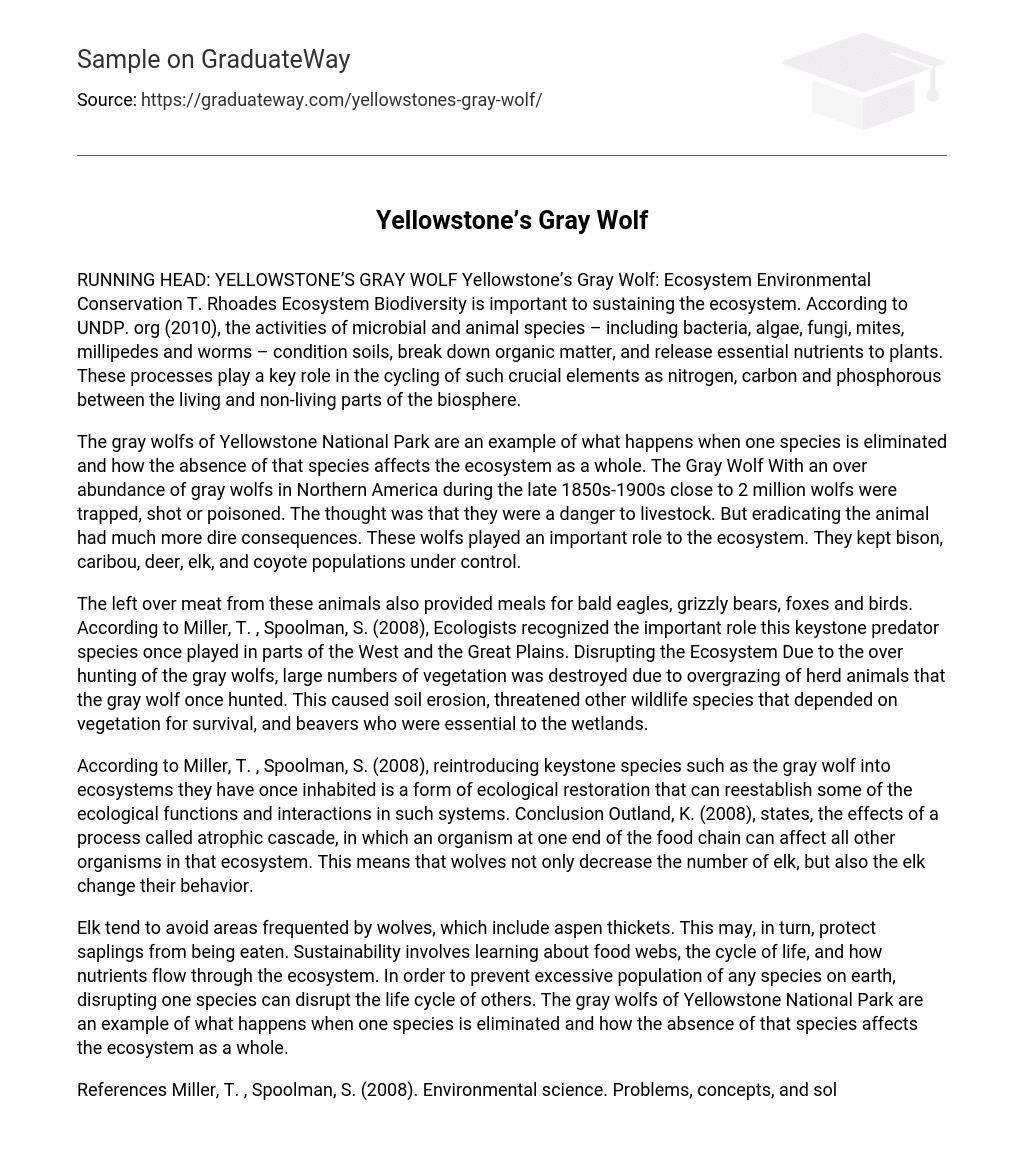According to UNDP.org (2010), biodiversity plays a critical role in the ecosystem. It encompasses various microbial and animal species, including bacteria, algae, fungi, mites, millipedes, and worms. These diverse organisms are essential for soil conditioning, organic matter decomposition, and nutrient supply to plants. By facilitating the transfer of vital elements like nitrogen, carbon, and phosphorus between living and non-living components of the biosphere, these processes are crucial.
The impact of species elimination on an entire ecosystem can be seen through the example of the gray wolf population in Yellowstone National Park. During the late 1850s to the 1900s, there was an overabundance of gray wolves in Northern America. As a result, approximately 2 million wolves were trapped, shot, or poisoned due to concerns about protecting livestock. However, removing these animals had major effects as they played a vital role in maintaining ecological balance by controlling populations of bison, caribou, deer, elk, and coyotes.
Miller, T. and Spoolman, S. (2008) note that ecologists recognize the critical role of the gray wolf as a keystone predator species in specific areas of the West and Great Plains. These wolves not only serve as prey for bald eagles, grizzly bears, foxes, and birds but also have a significant impact on vegetation due to their hunting behaviors. Unfortunately, excessive hunting of gray wolves has resulted in overgrazing by herd animals previously targeted by the wolves. This overgrazing causes extensive damage to vegetation, soil erosion, and poses threats to other wildlife species dependent on vegetation for survival. Additionally, it affects beavers who play a crucial role in preserving wetlands’ health.
According to Miller, T. , Spoolman, S. (2008), bringing back keystone species like the gray wolf to their former ecosystems is a type of ecological restoration that can restore some of the ecological functions and interactions in those systems. Conclusion Outland, K. (2008), states that the effects of a process called atrophic cascade can occur, wherein an organism at one end of the food chain can impact all other organisms in that ecosystem. This implies that wolves not only reduce the elk population, but also cause behavioral changes in elk.
Elk tend to steer clear of areas regularly visited by wolves, including aspen thickets. This practice may help safeguard young trees from being consumed. Sustainability entails acquiring knowledge about food webs, the cycle of life, and the flow of nutrients within ecosystems. To prevent overpopulation of any species on Earth, disrupting one species can have a ripple effect on the life cycles of others. The gray wolves in Yellowstone National Park exemplify the consequences of eliminating a species and how its absence impacts the entire ecosystem.
References
- Miller, T. , Spoolman, S. (2008). Environmental science. Problems, concepts, and solutions. 12th Ed. Brooks/Cole Cengage Learning.
- Outland, K. (2008). Who’s Afraid of the Big Bad Wolf? The Yellowstone Wolves Controversy. The Journal of Young Investigators.
- The Importance of Biodiversity. Retrieved on February 14, 2010 from: http://www. undp. org/biodiversity/biodiversitycd/bioImport. htm





